2019
JAXA Workforce, 2010-2020
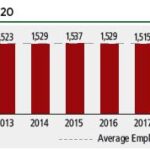
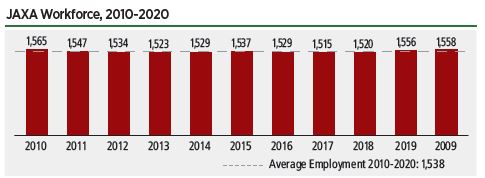
The Japan Aerospace Exploration Agency (JAXA) employed 1,558 people in 2020, approximately the same number as in 2019. Engineers and researchers account for 70.1% of this total.
European Space Industry Employment, 2010-2020
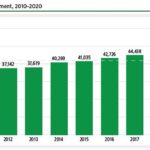
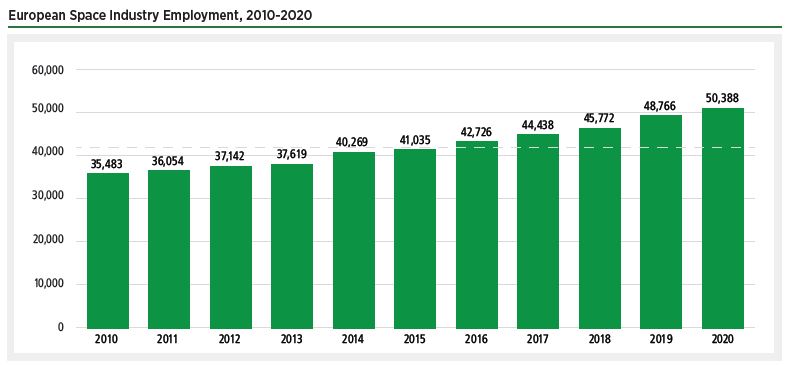
The European space workforce included 50,388 workers in 2020, an increase of 3.3% from the 48,766 workers in 2019. The largest increases were seen in . . .
Japanese Space Industry Employment, 2009-2019
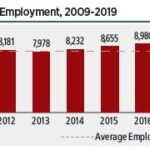
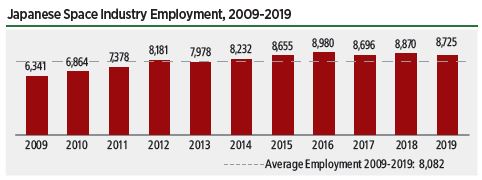
According to the Society of Japanese Aerospace Companies, the Japanese space workforce included 8,725 workers in 2019. . . More than 70% of these workers are in the space vehicle sector. While this sector decreased 1.9% from 2018 to 2019, it remains nearly 10% larger than it was five years ago.
Share of U.S. Government Space Spending in Military and Civil Government Domains, 2011-2020
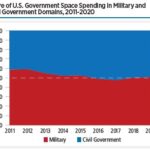
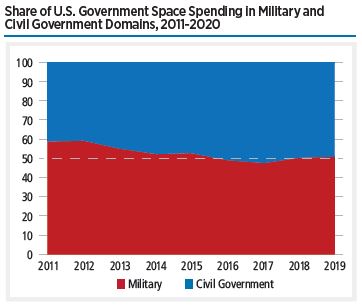
Share of U.S. Government space spending in military and civil government domains, 2011-2020
Rate of Change in U.S. Government Space Spending, 2011-2020
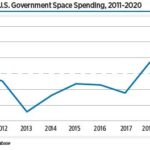
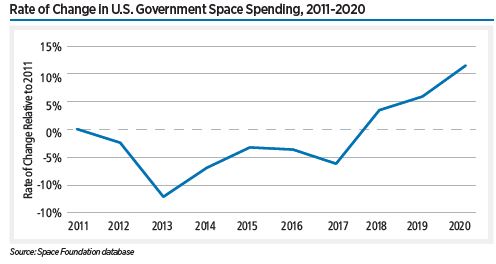
Almost 44% of all U.S. space spending was allocated to NASA in 2020 — over $22.6 billion.184 This figure is a 5.3% increase over 2019 and a 22.8% increase over the preceding decade.
Global Military vs. Civil Government Space Spending, 2011-2020
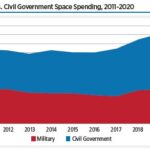
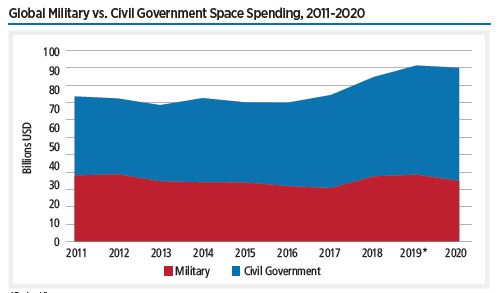
Notably, military space spending in 2020, estimated at US$31.4 billion, constituted the smallest share of global government space spending in a decade – only 35%. This figure marks a reduction from 2019, wherein the $34.6 billion spent globally constituted 38% of government space spending. U.S. military space spending increased by 6.1% in 2020, reaching a new height of $26.6 billion and comprising more than 80% of global military space spending for the first time since 2011.
U.S. Space Industry Core Employment, 2010-2020
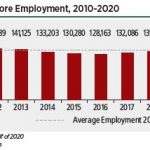
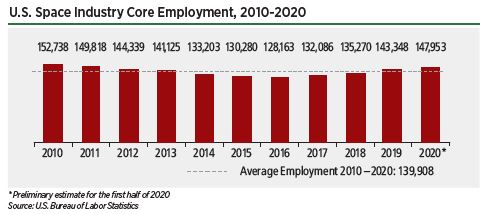
The industry has been growing steadily since 2016, with employment increasing 15.4% over the last four years. These preliminary results suggest that the space industry has been relatively resilient to the effects of the global pandemic.
Rate of Change in Non-U.S. Government Space Spending, 2011-2020
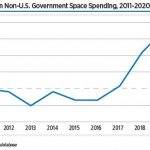
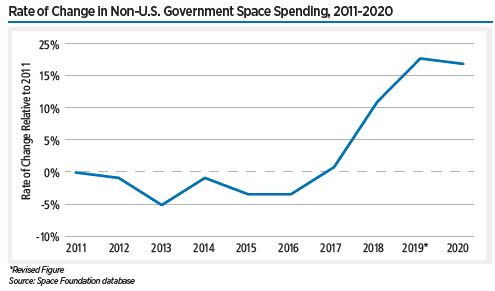
Non-U.S. military space was funded at less than half the level it had been in 2019, according to a country-level analysis of six nations spread across four continents: Argentina, Brazil, France, Germany, Japan, and Nigeria. This drop in investment suggests that, for many countries, military space takes a back seat to civil space ambitions and emergency relief for terrestrial disasters such as the coronavirus for many countries.
Average Payloads Deployed per Successful Orbital Launch (2011-2020)
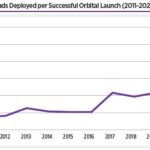
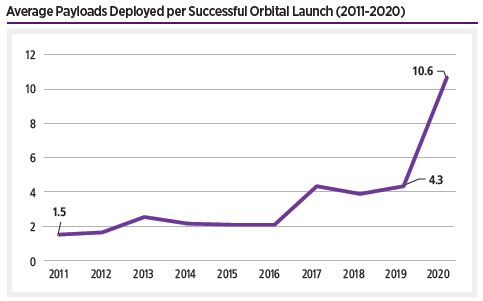
Why might we be seeing this shift towards small vehicles? Average payload deployment per successful launch, a reflection of growing ridesharing among spacecraft operators, reached a height of nearly 11 payloads per launch in 2020. This figure is 2.5 times higher than the previous year and 7 times higher than a decade ago.
S-Network Space Index vs. Benchmark Indexes, May 7, 2018 –March 31, 2021
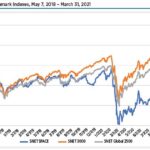
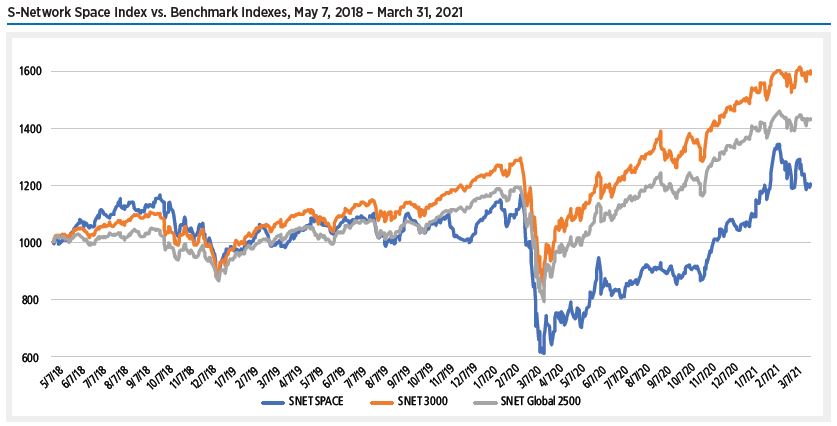
Assessing the multi-year performance of the S-Network Space Index since live calculation began in May 2018, the outperformance in Q1 2021 was insufficient to close the substantial gap the SNET 3000 and SNET Global 2500 opened up in late 2019 and early 2020.